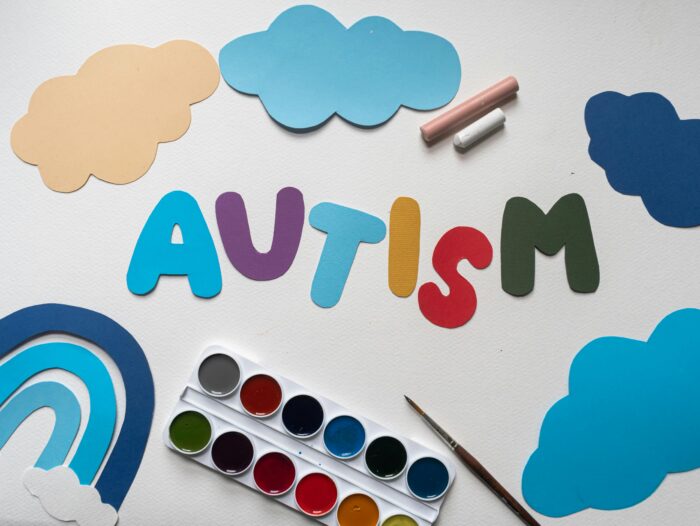Understanding the Range: A Comprehensive Overview to Autism Understanding
Understanding the Range: A Comprehensive Overview to Autism Understanding
Blog Article
Checking Out Autism: Techniques for Reliable Communication and Communication
Efficient communication and interaction with individuals on the autism spectrum demand a comprehensive understanding of their unique needs and choices. The complexities of these approaches disclose further considerations that merit expedition, particularly in just how they can be adjusted to diverse contexts and individual experiences.
Recognizing Autism Spectrum Disorder
Autism Spectrum Disorder (ASD) incorporates a series of neurodevelopmental problems identified by challenges in social interaction, interaction, and recurring behaviors. The term "range" shows the diverse manifestations and varying levels of severity experienced by individuals with ASD. While some may display significant impairments, others might show high-functioning characteristics, enabling higher self-reliance in life.
The onset of ASD generally occurs in very early childhood years, with indicators typically recognizable by age two. Very early indications may include delayed speech growth, minimal eye call, and problems in recognizing social signs. Although the exact etiology of ASD stays uncertain, research suggests a combination of genetic and ecological elements plays an important role in its growth.
Individuals with ASD commonly have special toughness, such as enhanced attention to detail and extraordinary memory skills. They may battle with understanding abstract ideas and handling modifications to routine - autism. Consequently, treatments and support customized to specific needs are essential for fostering communication and social abilities. Recognizing the complexity of ASD is important for promoting awareness, approval, and reliable techniques that facilitate purposeful communications with individuals on the spectrum.

Relevance of Clear Interaction
Effective communication is important for fostering understanding and link, specifically for individuals with Autism Range Problem (ASD) Clear communication not only helps with social communications but also boosts the individual's ability to express their demands, emotions, and thoughts. For individuals with ASD, the nuances of language can typically be testing; for that reason, making use of unambiguous and uncomplicated language is necessary.
Furthermore, clear communication helps in reducing frustration and anxiety that might arise from misconceptions. When messages are conveyed in a regular and direct way, individuals with ASD are better equipped to translate info accurately, which can dramatically improve their social engagement and engagement in numerous settings.
Developing regimens and making use of visual supports can further boost clear communication. These methods provide people with foreseeable frameworks that aid comprehension and retention of info. Furthermore, proactively being and paying attention person during interactions advertises an encouraging setting where individuals with ASD really feel valued and comprehended.
Ultimately, focusing on clear interaction not just equips individuals with ASD but likewise fosters more purposeful connections with their peers, caregivers, and the larger neighborhood, paving the method for joint partnerships and comprehensive interactions. - autism
Non-Verbal Communication Strategies
Communication expands past words, and for people with Autism Spectrum Condition (ASD), non-verbal hints play a significant duty in interactions. Non-verbal communication strategies can include facial expressions, gestures, body movement, and eye call, all of which offer as essential parts for conveying emotions and objectives.
Recognizing and interpreting these non-verbal signals can enhance interactions with people with ASD. A cozy smile or open stance can create a welcoming atmosphere, encouraging involvement. Making use of visual aids-- such as image cards or symbols-- can bridge communication gaps and help convey messages a lot more efficiently.
It is also essential to be conscious of individual area, as individuals with ASD might have different convenience degrees pertaining to distance. Observing their responses to physical nearness can inform appropriate modifications.

Creating Encouraging Atmospheres
Producing a supportive atmosphere is essential for cultivating favorable communications and enhancing the wellness of individuals with Autism Range Disorder (ASD) Such atmospheres can substantially reduce anxiousness and produce a feeling of safety and security, permitting people to express themselves more easily.
To accomplish this, it is vital to take into consideration sensory level of sensitivities that individuals with ASD may experience. Changing the physical area to include soft lighting, very little background noise, and comfy seats can develop a soothing atmosphere. Additionally, using constant routines and clear aesthetic routines can help individuals anticipate changes and decrease uncertainty, more promoting convenience.
Social rooms should be structured to minimize overwhelming stimuli while offering chances for interaction in recommended tasks. Facilitating locations designated for silent time can also serve as a haven during moments of stress and anxiety. Significantly, incorporating elements of option empowers individuals, permitting them to exercise agency in their setting.

Urging Social Interactions
Fostering social interactions among individuals with Autism Range Disorder (ASD) requires intentional approaches that focus on convenience and involvement. Developing foreseeable regimens can help in reducing anxiousness, making social setups more friendly. Producing organized environments with defined roles and duties enables people to involve without the overwhelming pressure of unstructured social characteristics.
Including passions and toughness right into social activities can act as a catalyst for communication. Arranging team tasks around shared hobbies or topics of attraction can assist in all-natural discussions and links. Furthermore, utilizing visual assistances, such as photographic routines or social scripts, can aid in recognizing social signs and expectations.
Designing appropriate social behaviors is crucial - autism. Grownups and peers must demonstrate reliable interaction techniques, consisting of active listening and turn-taking. Role-playing circumstances can likewise supply a safe room for individuals to exercise these skills
Last but not least, cultivating peer partnerships via comprehensive techniques is essential. Encouraging comprehensive playdates or team getaways can develop possibilities for socializing in a comfortable setting. By executing these teachers, caregivers and approaches can significantly enhance social communications for people with ASD, promoting their general social growth and health.
Conclusion
In verdict, reliable interaction and interaction approaches are essential for click supporting individuals with Autism Range Condition. Inevitably, these methods encourage people with autism to browse social landscapes, advertising their total well-being and enabling the development of long lasting partnerships.
Efficient communication and interaction with people on the autism range demand a detailed understanding of their special demands and choices. Clear interaction not just promotes social interactions however also boosts the person's capability to reveal their thoughts, emotions, and requirements.Cultivating social communications amongst people with Autism Range Condition (ASD) requires deliberate methods that focus on convenience and engagement. By implementing these caregivers, strategies and educators can considerably improve click to investigate social interactions for people with ASD, advertising their overall social development and well-being.
In conclusion, effective interaction and communication approaches are necessary for supporting individuals with Autism Spectrum Problem.
Report this page